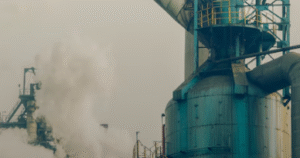#CopperDemand #EconomicHealth #IndustrialMetal #MarketTrends #InfrastructureDevelopment #RenewableEnergy #CommodityMarkets #GlobalEconomy
Copper is often dubbed as “Dr. Copper” by market analysts and economists due to its ability to predict the overall health of the global economy. This isn’t a baseless moniker, as copper’s widespread use in various sectors—from construction and infrastructure to electronics and renewable energy—makes its demand a key indicator of economic health. When economies are growing, the demand for copper typically increases, driven by the need for new infrastructure, electrical goods, and energy projects. Conversely, a downturn in copper demand often signals a slowdown in economic activity, as less copper is needed for construction and manufacturing.
The link between copper demand and economic health is evident through its applications in critical industries. Copper’s excellent conductivity makes it indispensable in electrical wiring, motors, and renewable energy systems, such as solar panels and wind turbines. The construction industry’s reliance on copper for plumbing, roofing, and wiring further underscores its significance. As countries and corporations increasingly focus on sustainable development and renewable energy, the demand for copper is expected to grow, reflecting broader economic trends and initiatives towards a greener economy.
Furthermore, the push towards electrification and electric vehicles (EVs) adds another layer to copper’s economic relevance. EVs require significantly more copper than traditional internal combustion engine vehicles. This surge in demand highlights a shift towards cleaner modes of transportation, reflecting broader economic policies and consumer preferences towards sustainability. Moreover, major economies’ infrastructure investments, including developments in 5G networks and renewable energy projects, are expected to sustain long-term demand for copper, indicating a positive outlook for the global economy.
However, it’s essential to consider the complexities of the copper market. Supply constraints, such as mining disruptions, labor strikes, or geopolitical tensions, can affect copper prices and, by extension, its demand as a proxy for economic health. Analysts monitor these factors closely, alongside copper demand, to gauge future economic trajectories. Despite these challenges, copper’s role in the global economy remains solid. As we move towards a more electrified and sustainable future, copper will continue to be a critical economic health barometer, making its demand a focal point for investors, policymakers, and economic strategists alike.







Comments are closed.